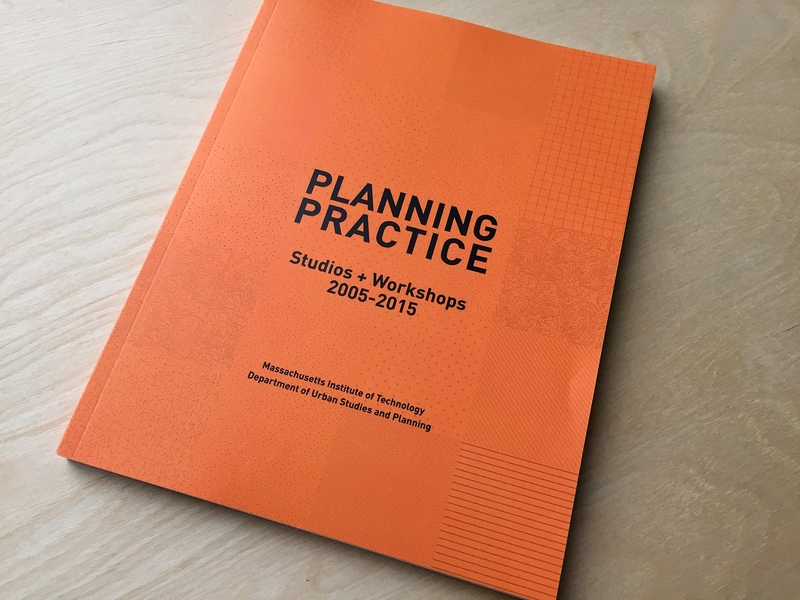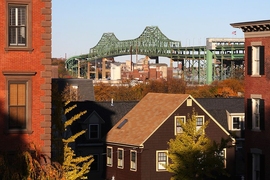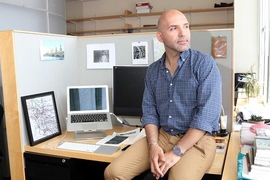Since its founding in 1933, MIT’s Department of Urban Studies and Planning (DUSP) has engaged students in solving real-world problems. Working with clients from Boston to Beijing, students tackle challenges that vary from designing built environments to devising policies that guide housing, community, and economic development.
A new DUSP publication, "Planning Practice: Studios + Workshops, 2005–2015," showcases the last decade of these investigations.
The book presents more than 100 projects in 91 places worldwide. The projects are grouped in three sections covering projects in 15 cities and towns within Massachusetts, 24 throughout the U.S., and 52 at sites in Asia, Europe, Africa, South America, and the South Pacific.
“Each project confronts students with problems that can be solved by good urban planning and design,” says Eran Ben-Joseph, department head and professor of landscape architecture and urban planning. “Under faculty supervision, they devise solutions by engaging — and at times advancing — our field’s body of knowledge, techniques, and values.”
In his preface, Ben-Joseph writes that whether a project focuses on physical space or public policy, at core it presents a problem of design. Solutions often draw upon a variety of disciplines, and students learn to value each other’s diverse expertise.
Working with their sponsoring client, students define the problem at hand, engage relevant stakeholders, conduct research, evaluate options, and determine a course of action. Students present their recommendations, including methods of implementation, and document the plan in a final report.
International projects are guided by faculty with deep local ties. Celebrating its 30th anniversary is the Beijing Urban Design Studio, a joint program of MIT and Tsinghua University led by Dennis Frenchman, the Leventhal Professor of Urban Design and Planning. Month-long residencies bring together faculty and students from both institutions to tackle development issues of China’s capital city — particularly the transition from traditional neighborhoods to high-rise megacity.
“Working with a multidisciplinary team of students from China and MIT was an intensive, immersive experience,” says Alexis Wheeler MCP, MSRED ’13, who is now head urban designer for the borough of Queens at New York’s Department of City Planning. “We saw how forms of housing influence daily life and how development can integrate existing neighborhoods.” Observing the robust food culture of one neighborhood, Wheeler and her team proposed the use of urban agriculture to develop jobs, housing, and public space.
In the U.S., clients can include entire cities. Six years ago, Portland, Maine, the state’s seaside commercial hub, needed a strategy to counter its economic downturn. Although its art and restaurant scenes were thriving, the 2008 financial crisis had taken a toll.
A team of 20 graduate students in the 2010 Economic Development Planning class of Karl Seidman, DUSP senior lecturer in urban studies and planning, prepared an economic development plan for Portland.
The students undertook three months of research, from interviewing more than 100 stakeholders to mining socioeconomic data and surveying best practices in other cities. “We gained a thorough understanding of how the Portland economy works, and with our clients and their partners devised a strategy for the city,” says Rebecca Karp MCP ’11, who led the project with Tim Bates MCP ’11. “Students conducted the entire project, with point persons managing its various components.”
The group capitalized on its varied skills. “We were economics nerds, policy wonks, transportation experts, and designers,” says Karp, now principal of Karp Strategies, an economic development consulting firm. “We gave each other lots of support and feedback. With this team, problem solving was fun.”
The students’ plan to attract and retain businesses won wide support, and the mayor spearheaded its implementation. Regarded as a catalyst of Portland’s economic revival, the MIT Plan remains posted on the city’s web site.
Reviving commerce and community life on a neighborhood scale is the business of the Revitalizing Urban Main Streets practicum, led by Seidman and DUSP lecturer Susan Silberberg. In 2007, their students partnered with residents and business owners along Broad Street in New Orleans to develop a vibrant new vision for this former main route into the city, which links four historic neighborhoods.
This neglected thoroughfare now hosts a growing cluster of services as well as its own nonprofit, Broad Community Connections, backed by accreditation — and funding — as a Main Street organization by the National Trust for Historic Preservation. Subsequent teams from Seidman’s Financing Economic Development class have worked with BCC to implement the strategy.
“We took a pragmatic approach from the start,” says New Orleans native Jeff Schwartz MCP ’09, founding executive director of the nonprofit. “Our strategy focuses on the unique assets of the Broad Street corridor. Over the years, we’ve capitalized on these strengths thanks to the long-term commitment of both DUSP and the community.”










